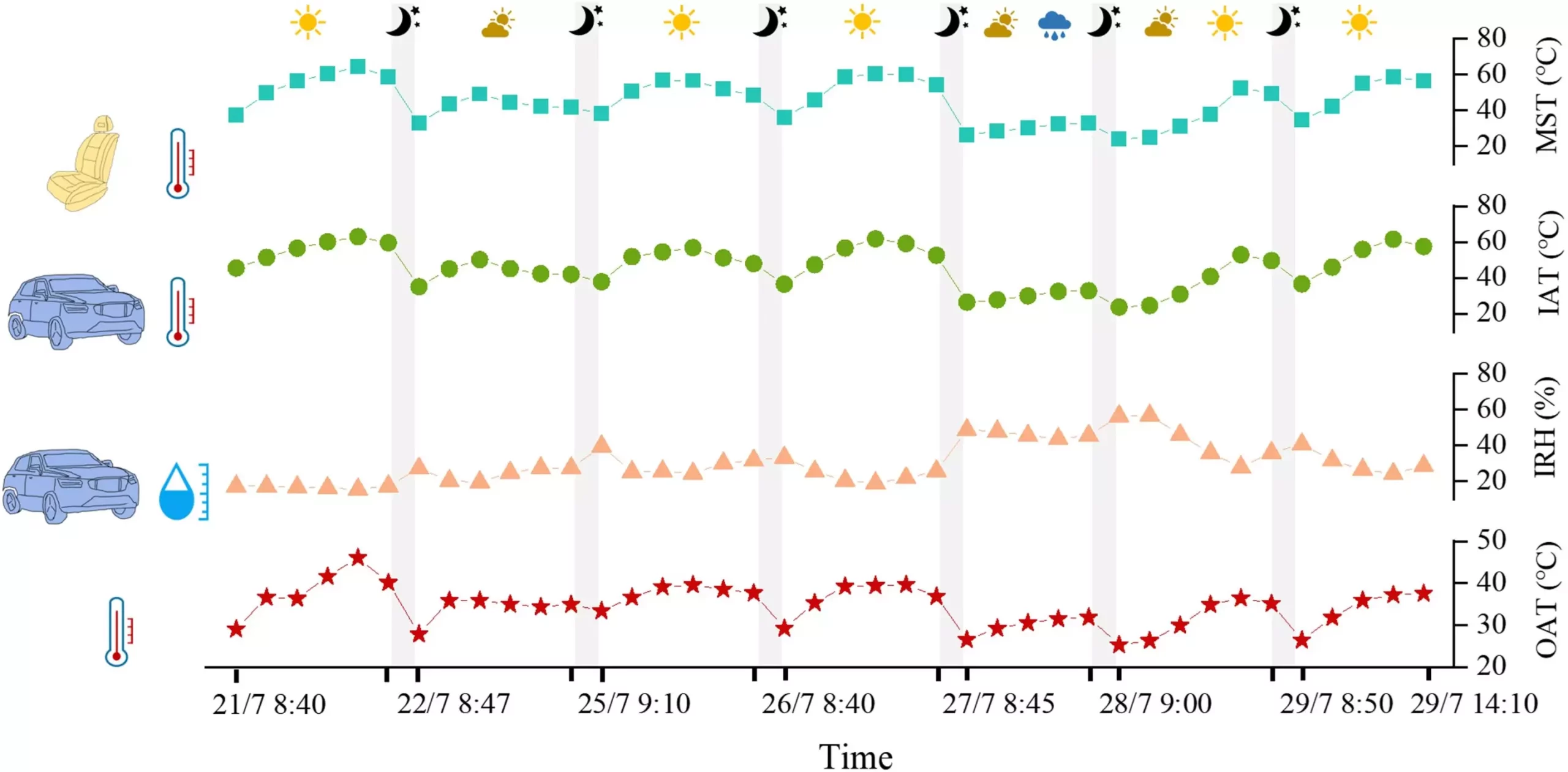The tantalizing aroma of a brand-new car, often dubbed the “new car smell,” is a scent many drivers eagerly associate with freshness and luxury. However, this appealing fragrance comes at a cost; it’s an alluring cover for a cocktail of volatile organic compounds (VOCs) that could be hazardous to our health. Recent findings reveal that during hot summer days, the levels of specific toxic VOCs emitted from new vehicles soar to alarming heights, potentially turning a coveted experience into a risky endeavor.
Understanding Volatile Organic Compounds
VOCs are organic chemicals that can evaporate into the air, and they are commonly released from various materials including carpets, plastics, and upholstery in newly manufactured cars. The research spearheaded by Jianyin Xiong, Shaodan Huang, and their team predominantly focused on the concentrations of dangerous substances such as formaldehyde, acetaldehyde, and hexaldehyde. Their study highlighted a stark reality: the levels of these harmful substances in vehicle cabins could exceed safety limits set by health regulatory bodies.
Notably, the Chinese national safety threshold for formaldehyde is capped at 100 µg/m³, with the study indicating actual measurements sometimes surpassing 200 µg/m³. Such elevated concentrations have grave implications, especially given the wide array of health issues associated with VOC exposure, which range from headaches and respiratory problems to long-term pulmonary diseases and cognitive impairments.
The Impact of Climate Change
The implications of rising temperatures due to climate change further compound the problem. As car interiors heat up on scorching summer days—where ambient temperatures can reach 46.1 °C (115 °F)—the emission rates of VOCs increase dramatically. This phenomenon calls into question the safety of driving new vehicles during peak summer conditions, highlighting a pressing public health concern. As temperatures are expected to persist at record highs, the problem is not merely seasonal; it is a growing, persistent risk that we cannot ignore.
Innovative Solutions for a Troubling Trend
The researchers’ development of a deep learning model to predict VOC concentrations in cars offers a promising avenue for addressing this dilemma. Such technology can play a critical role in real-time air quality assessment inside vehicle cabins, allowing for proactive measures to mitigate exposure. Integrating these predictive models into the control systems of intelligent cars potentially paves the way for smarter vehicles attentive to their occupants’ health.
This intersection of technology and safety is crucial—not only does it reflect advancements in automotive design and public health consciousness, but it also underscores the need for consumers to remain vigilant about the products they bring into their lives. Automakers and regulatory agencies must step up to ensure that modern vehicles provide not only a delightful driving experience but also a safe environment free from hidden threats lurking beneath the enjoyable veneer of ‘newness.’
While the thrill of owning a brand-new vehicle can be overwhelming, understanding and addressing the inherent risks associated with VOCs must take precedence. Awareness is the first step toward safer transitions into the automotive future.

